Antitwilight Arch
Also known as Belt of Venus and Venus's Girdle
The following eight photographs of my western horizon were taken on three successive nights during the autumn of 2018. I took all the views below from the driveway in front of my home just as the sun was rising over the eastern horizon. Because I live on a hill, I have a clear view of the western horizon, but the hill continues behind my home, so my view of the eastern horizon is effectively blocked. Thus, my photographs on this web page are primarily sunrise images, although the antitwilight arch is present on the eastern horizon just after sunset as well. This evening arch will be illustrated at the end of this page.
All three images that follow show the same scene of the western horizon taken during one morning, but at differing levels of detail. A pink sky at sunrise is not unusual and is due to the short wavelengths of light (the blue colors) being more easily scattered as light passes through the earth's atmosphere, leaving predominantly the longer wavelengths (the reds) to make it through. This is familiar to most people. However, notice on the opposite horizon (the western horizon) the dark (deep blue?) band beneath the pinkish sunrise light -- that is the antitwilight arch. What is its cause?

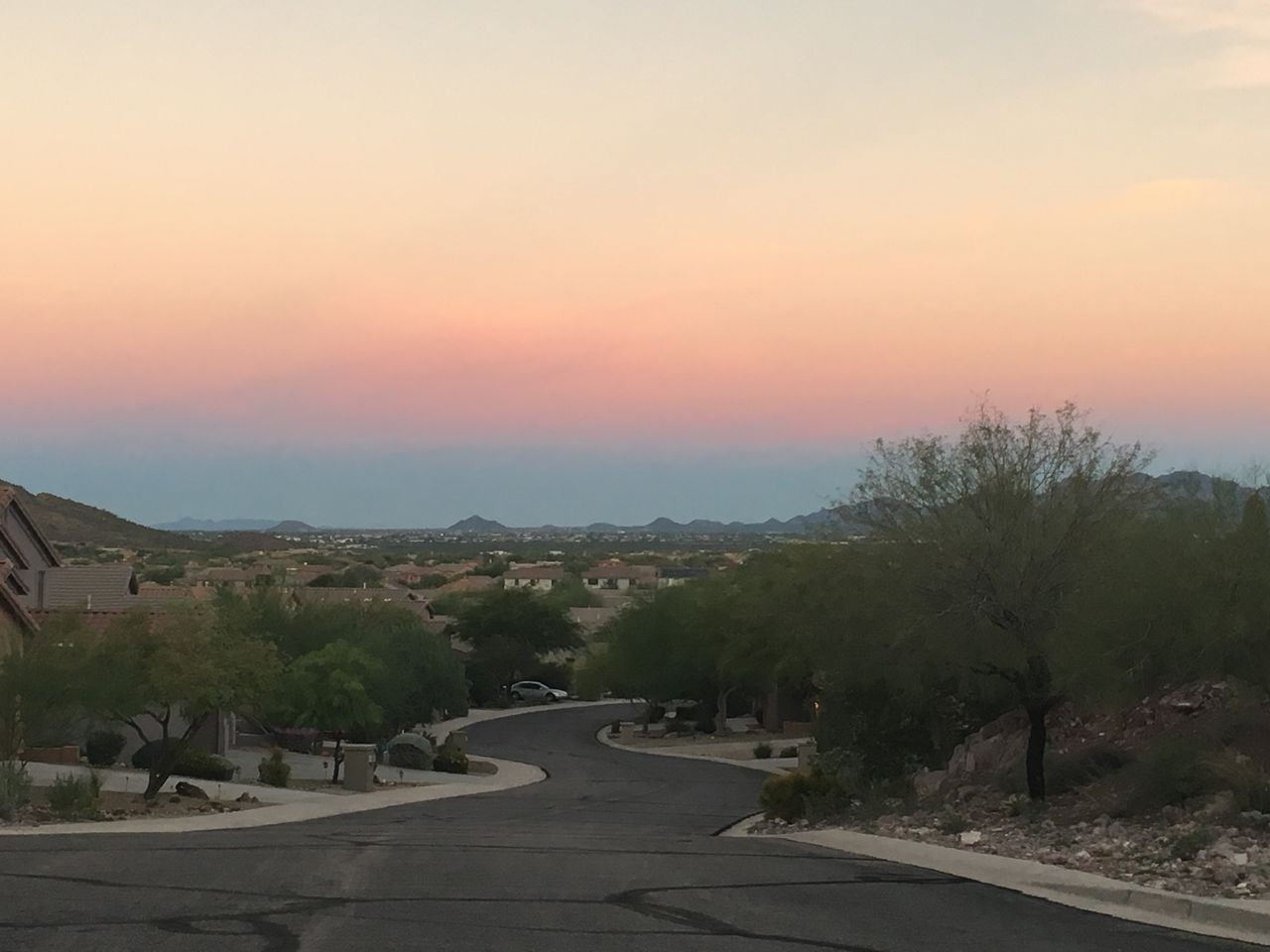

I took the two images below facing directly west at sunrise on the next day when the moon was full (notice the moon in the upper left of the wider image). The sun is rising directly behind the camera. Again, the dark band is below the pink. The reason for the dark band: it is the earth's shadow projected through the earth's atmosphere. It is dark because the sun's light has not yet illuminated it. It is present every morning and every evening in the direction OPPOSITE the rising or setting sun. Notice the band curves because the earth's surface curves.


I took these images (below) the next morning. Notice the moon is higher in the sky and is in a gibbous phase. There is some cloudiness, but the antitwilight arch is again present, as it is every morning (and evening).
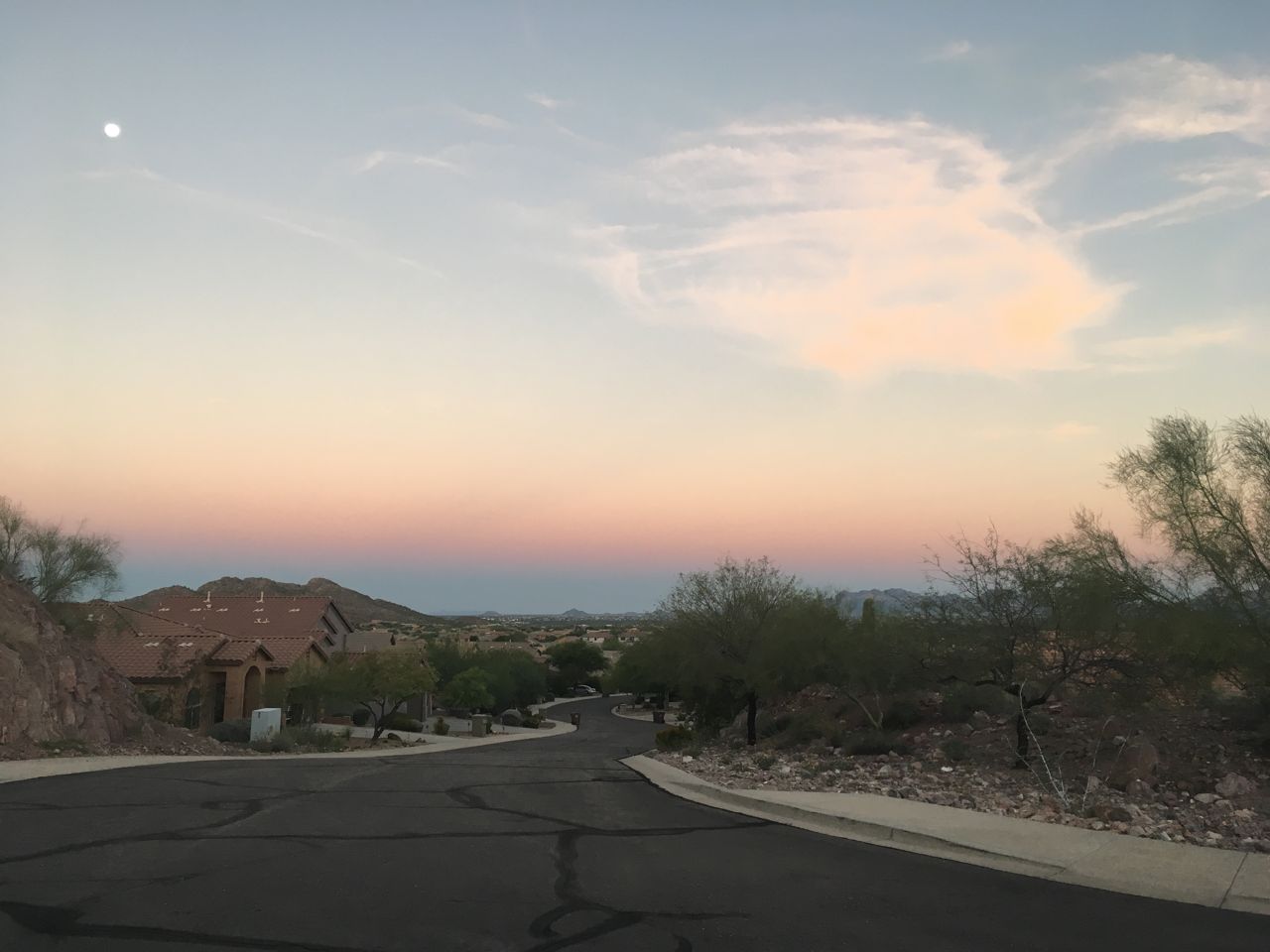

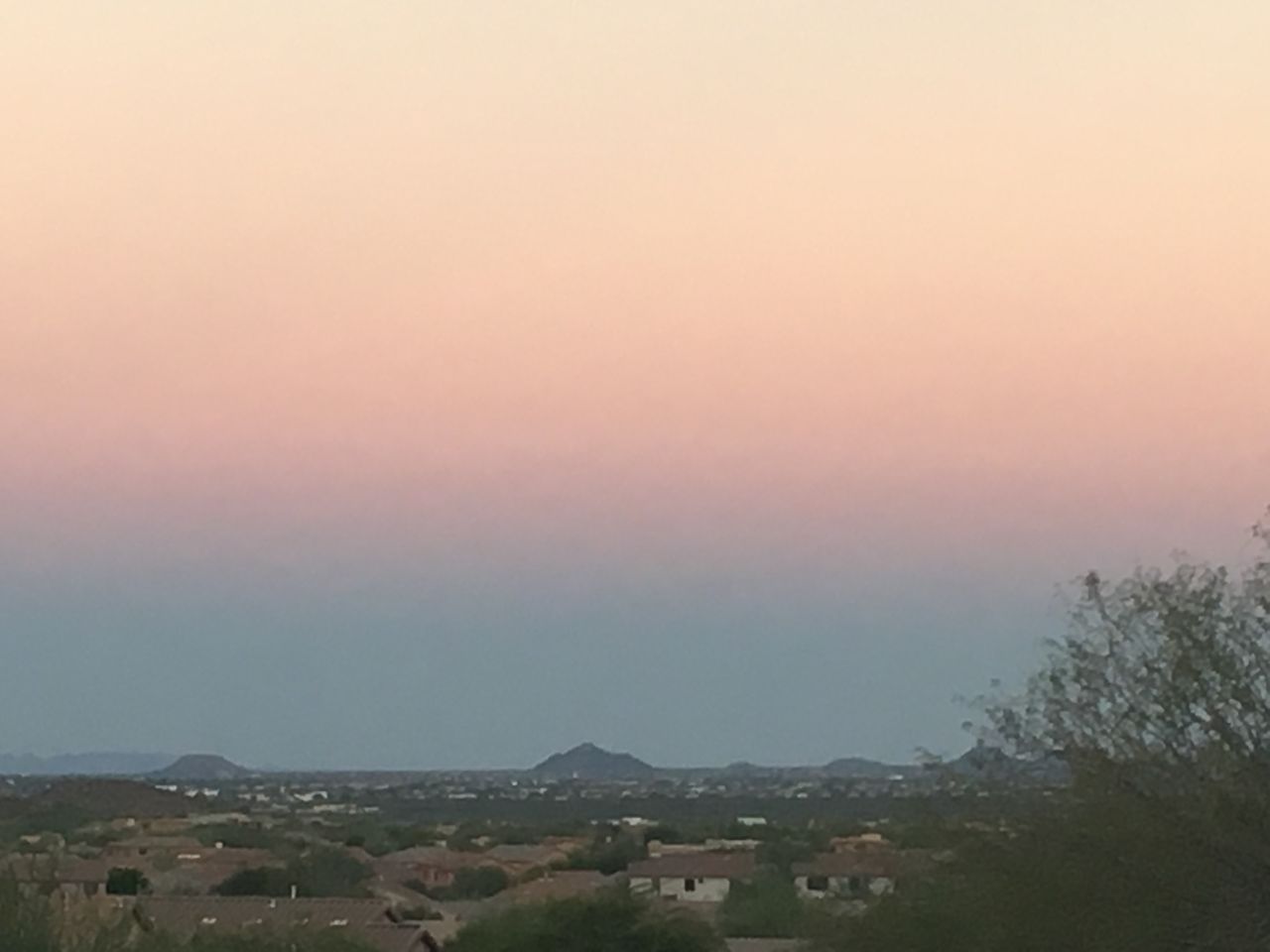
The name for this is anti (meaning opposite) twilight (meaning both sunrise and sunset) arch (meaning curved because the earth is a sphere and a sphere projects only a circular shadow). The name "Belt of Venus" is so very wrong for this phenomenon because it has nothing to do with the planet Venus and, indeed, the planet can only get 48 degrees away from the sun so it can never be found in the dark belt beneath the pink sky.
Below is a panorama made up of about six images that I took from my front driveway to better show the curve of the twilight arch.

How far out into space does the Earth's shadow extend? It extends well beyond the orbit of the Moon. Indeed, during a lunar eclipse the Moon moves into, through, and out of the Earth's shadow. So with the antitwilight arch you are seeing a very small part of a much larger feature -- a shadow that exists in the darkness of space and which can be seen at a distance only during lunar eclipses, but can be seen almost every cloudlss day at sunrise and sunset as a feature near your horizon.
Thus far on this web page my images have shown the antitwilight arch for a rising sun, but the two that follow will show the same effect for a setting sun.
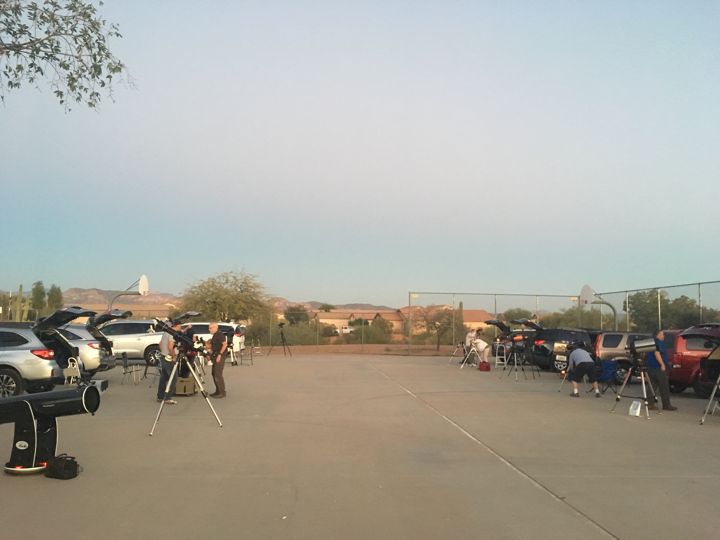
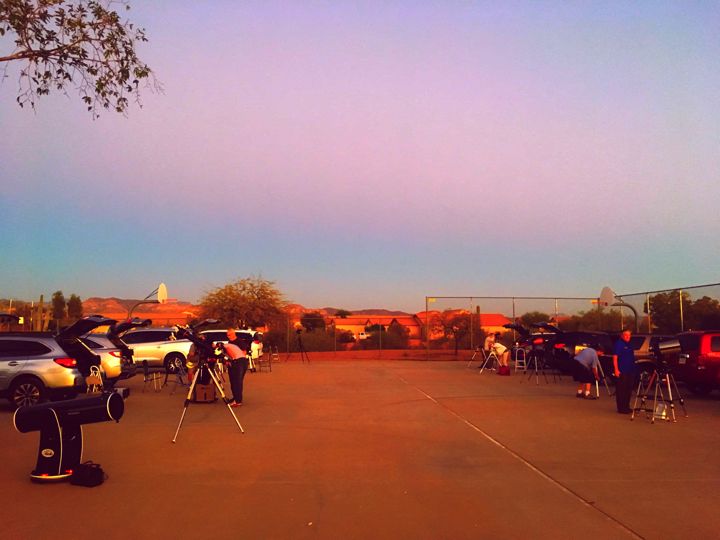
I took the two images above at the basketball court of Peralta Elementary School in Gold Canyon during the fall of 2018 near the time of sunset while several members of the local astronomy club (Superstition Mountain Astronomical League), of which I am a member, were setting up their telescopes for an evening public "star party." The view is toward the east, but, of course, the sun is setting in the west. Notice the pink sunset sky color is above a darker blue section of the sky that separates the pink from the horizon. This darker blue region is a section of the earth's shadow -- the antitwilight arch. I enhanced the colors on the second of the two photographs to better show the antitwilight arch color effects. The two images were taken only a few seconds apart.










